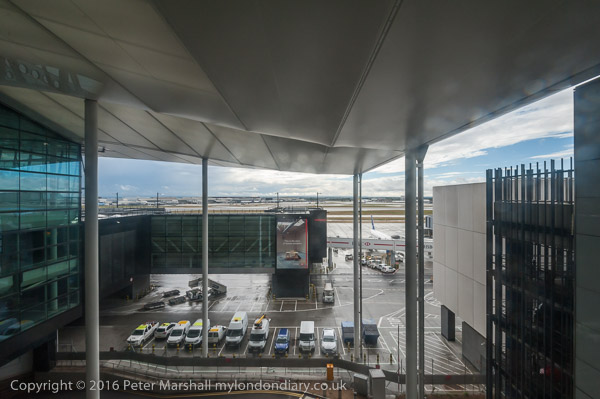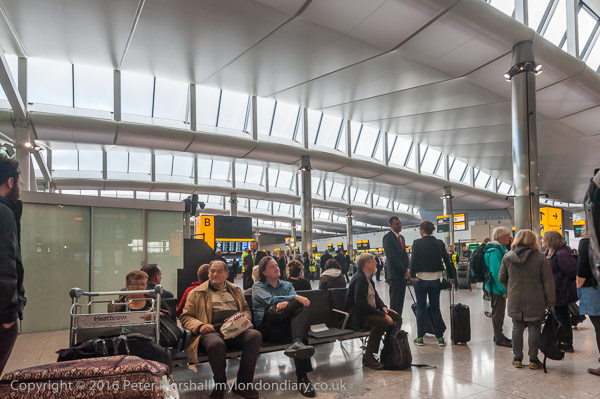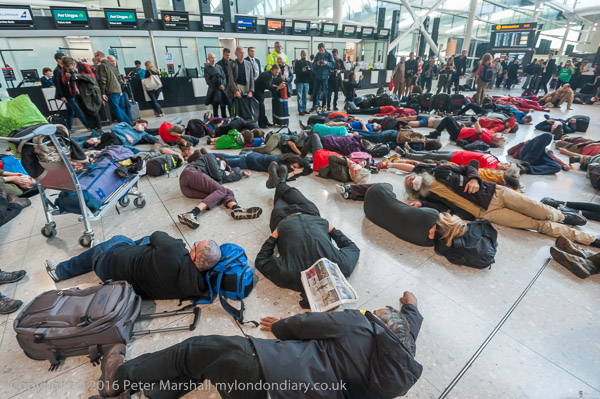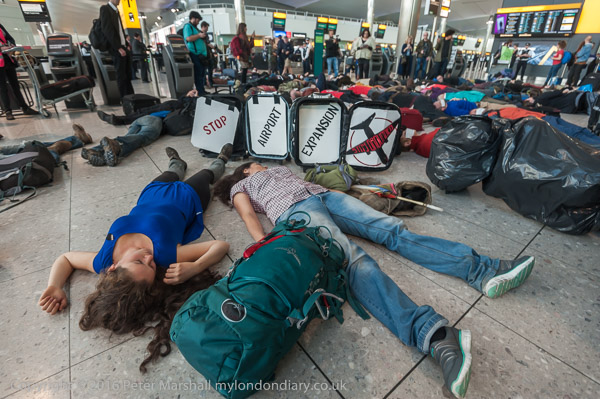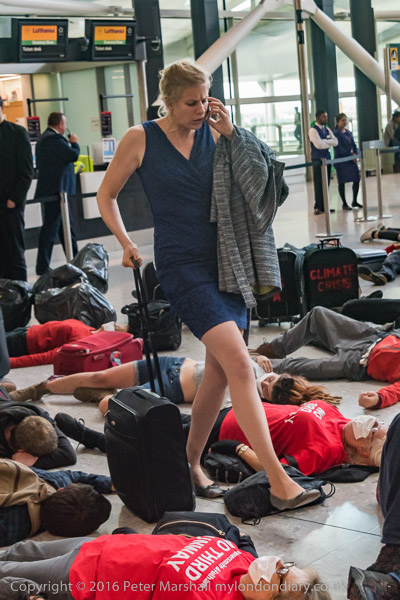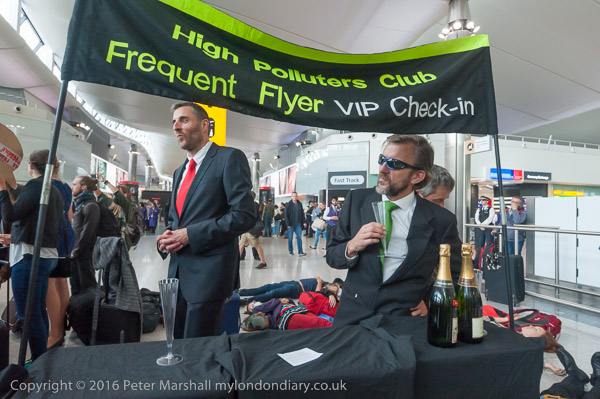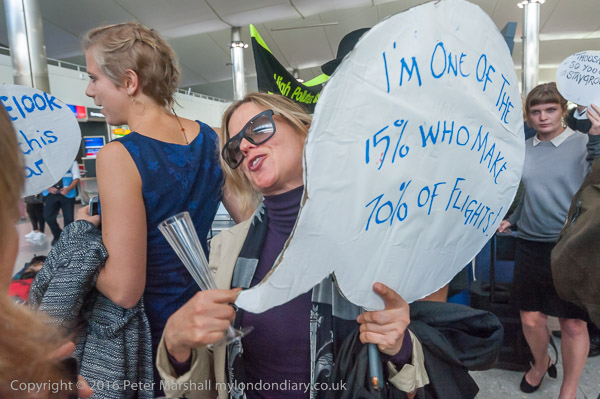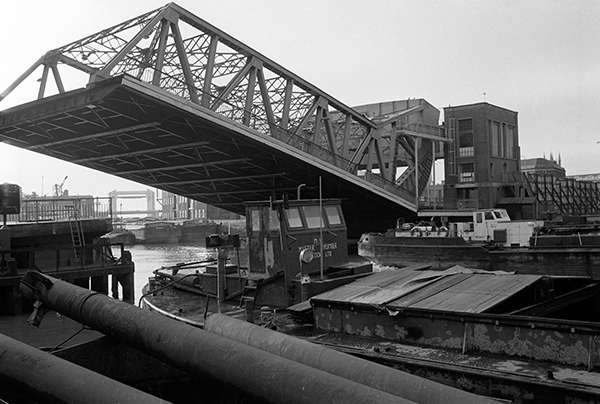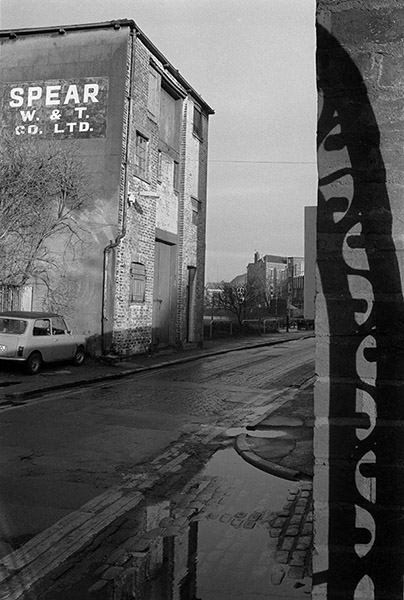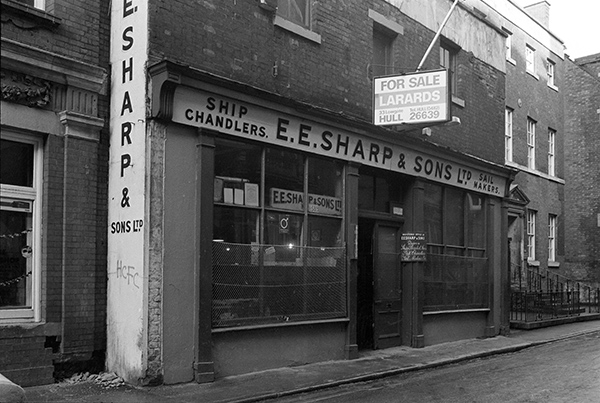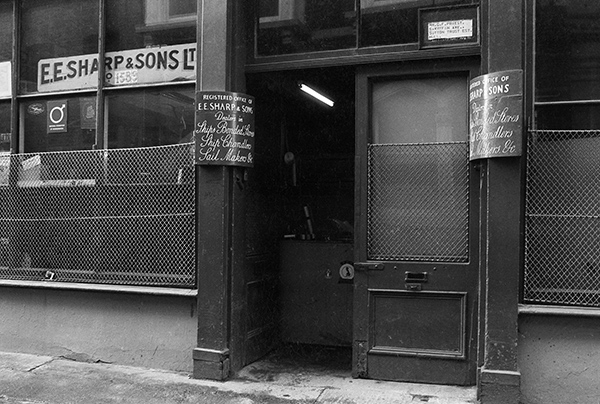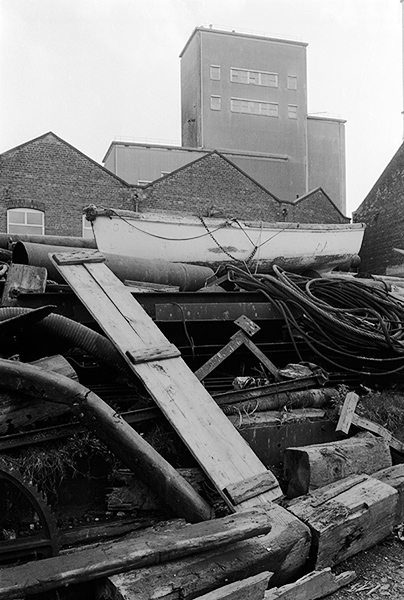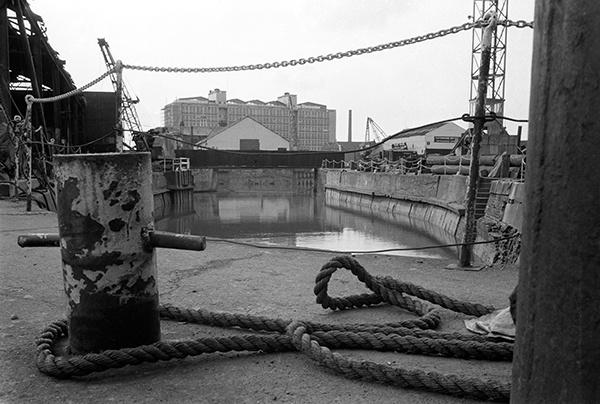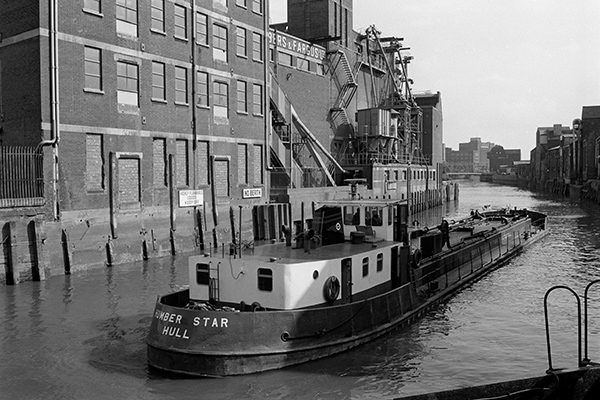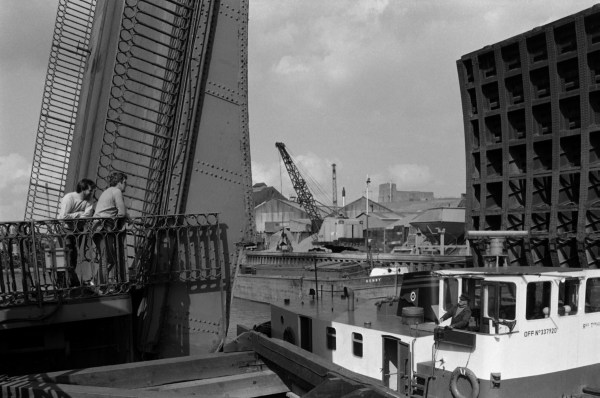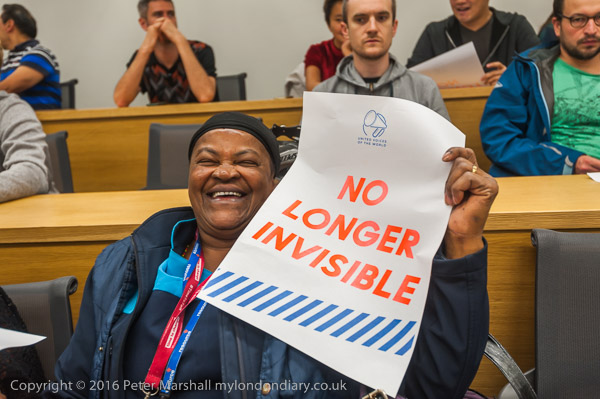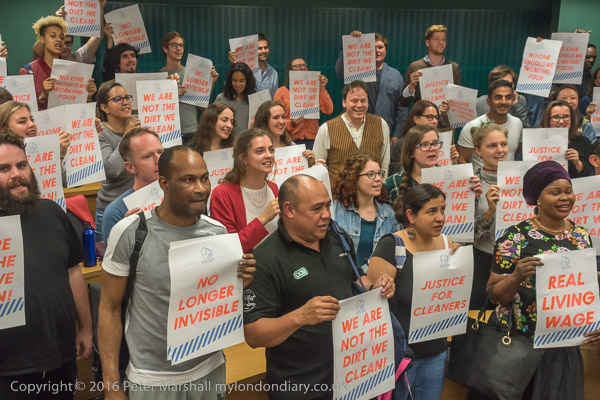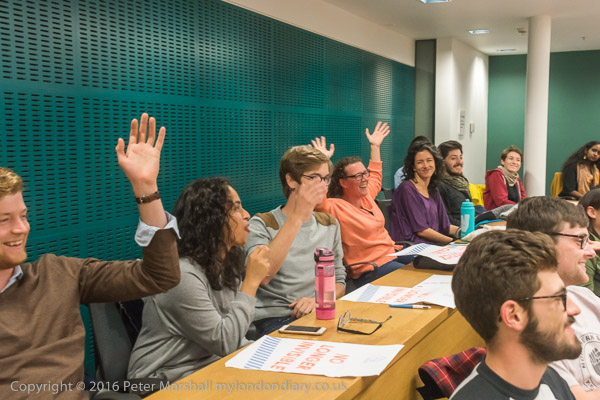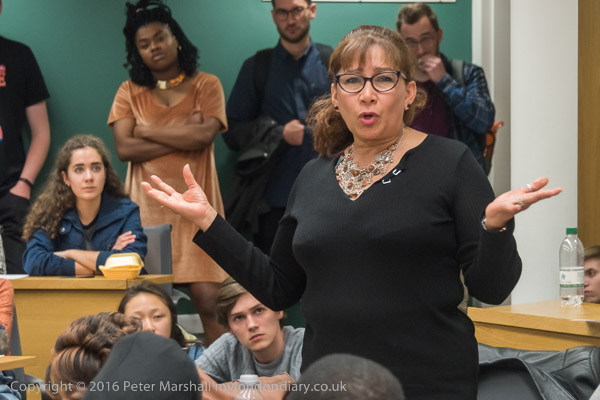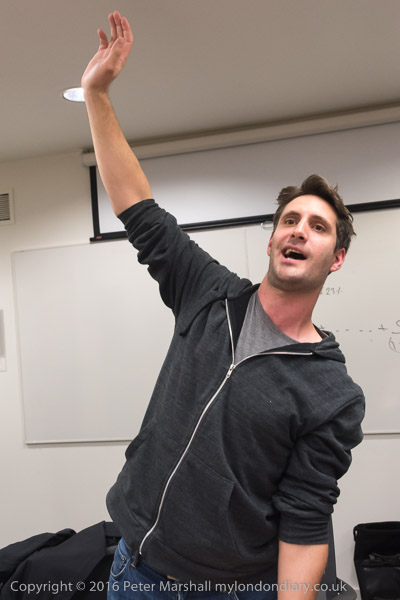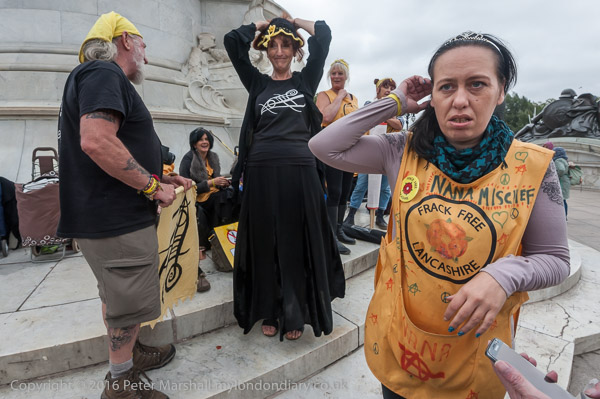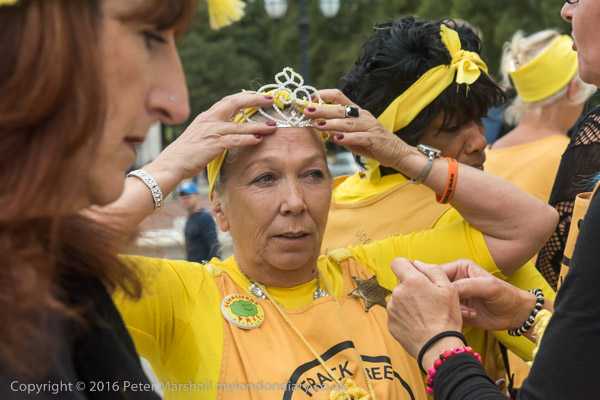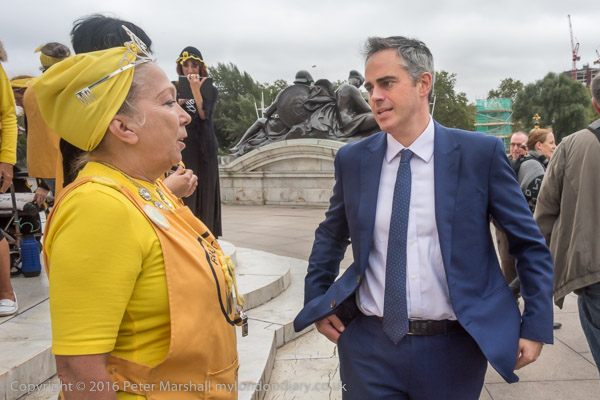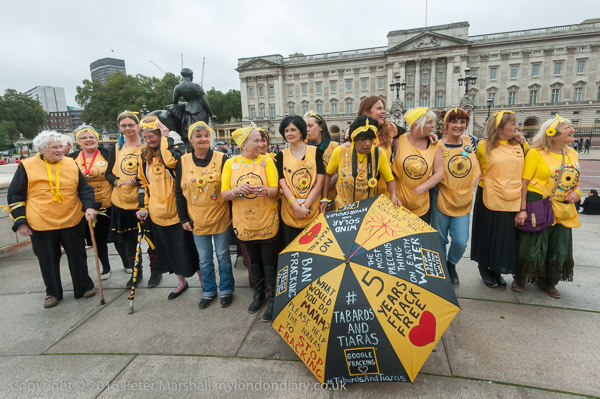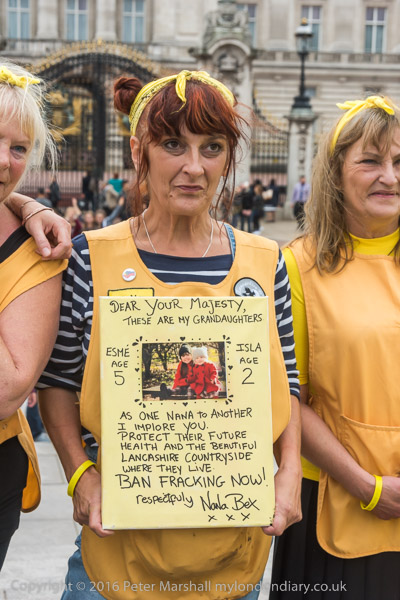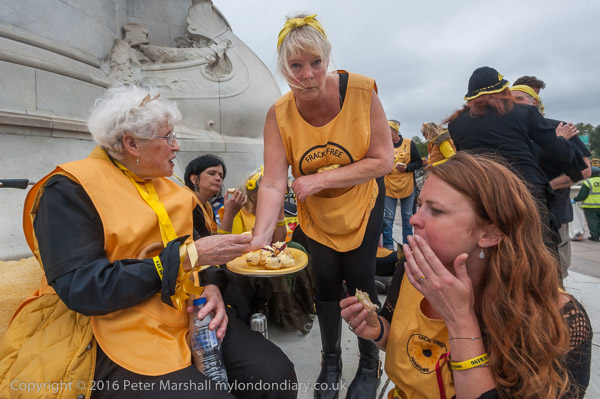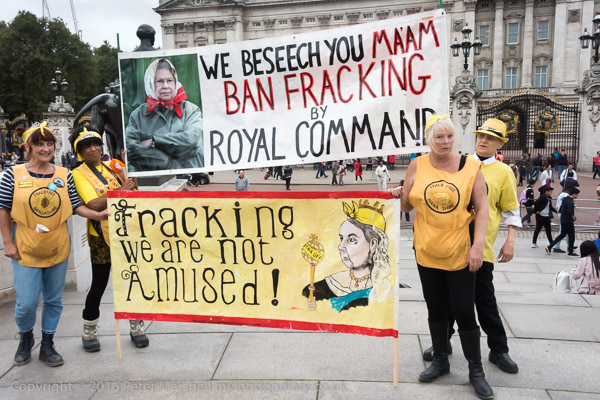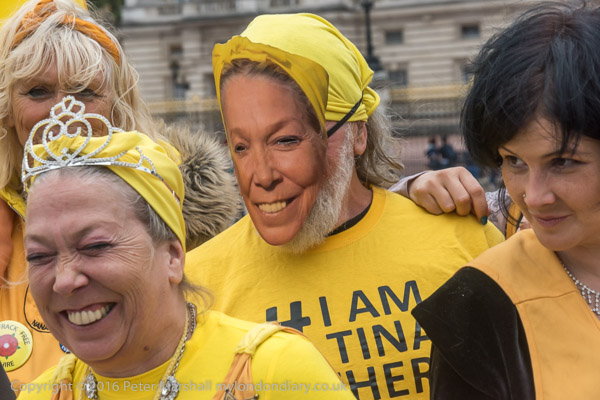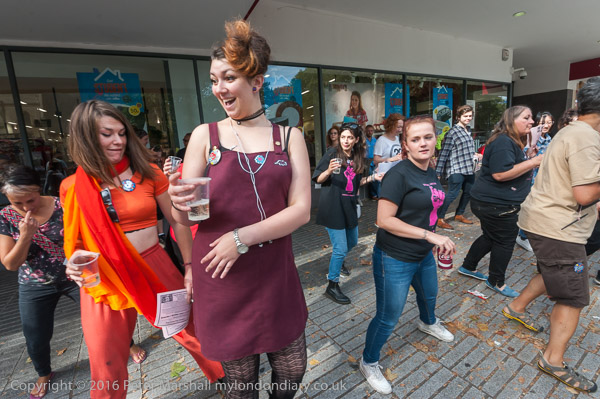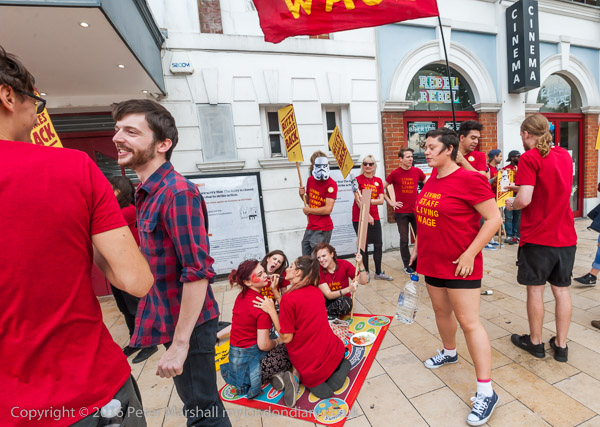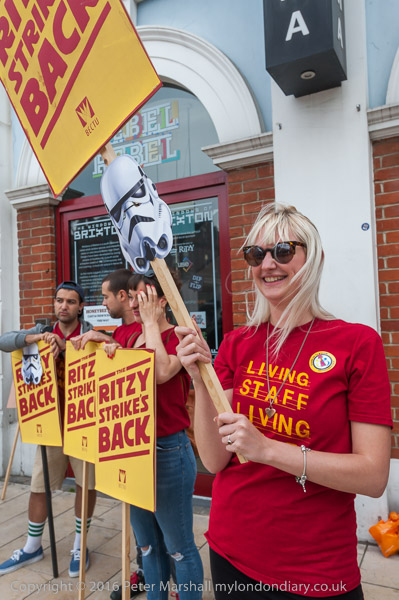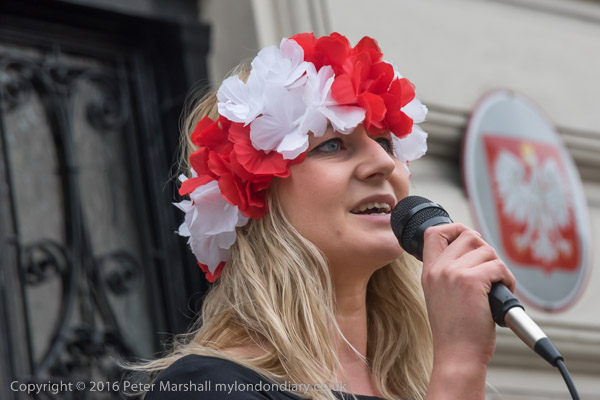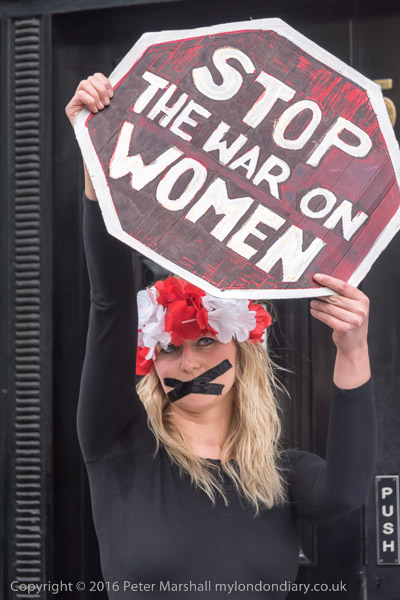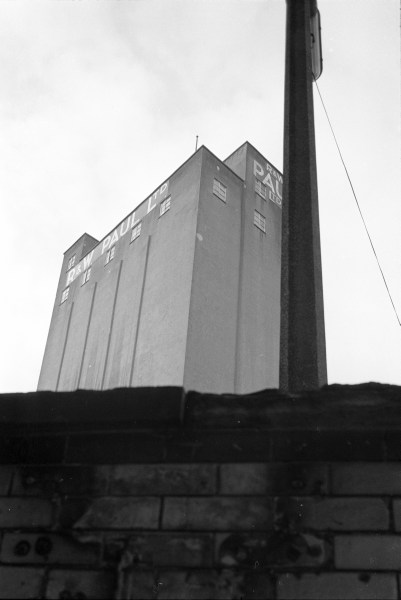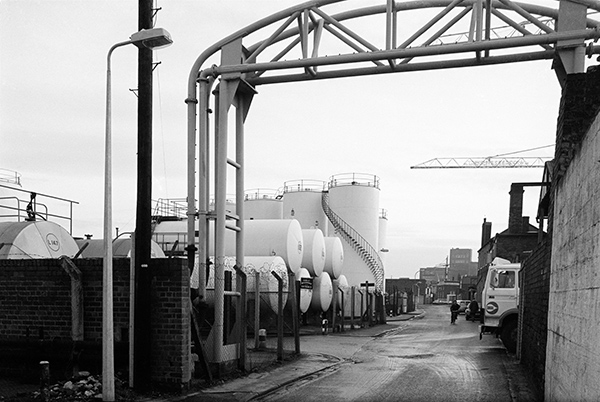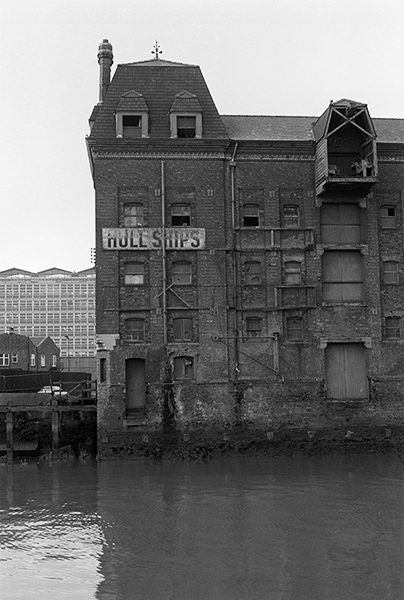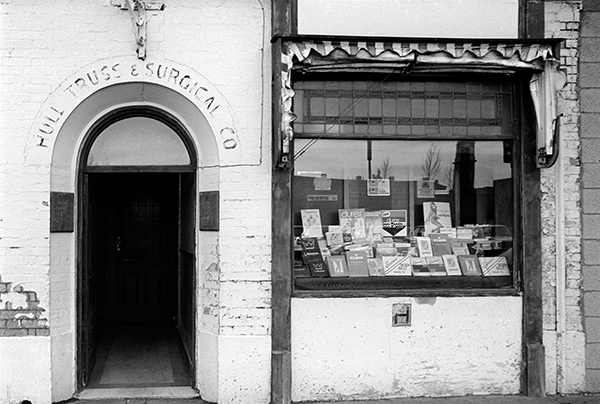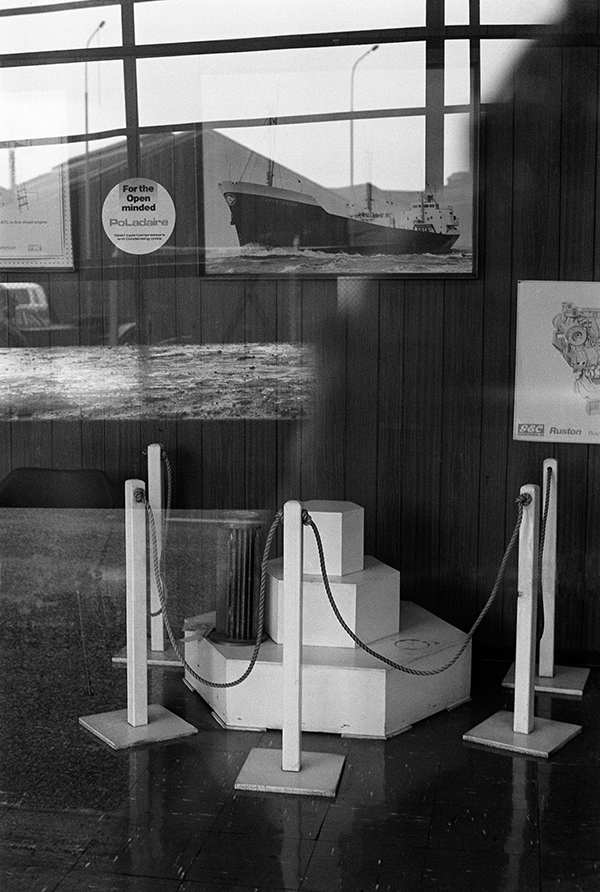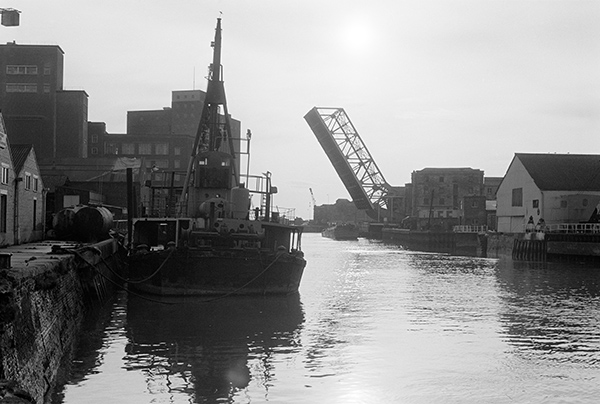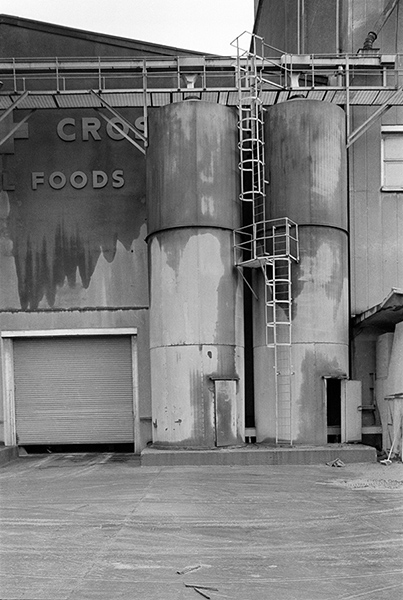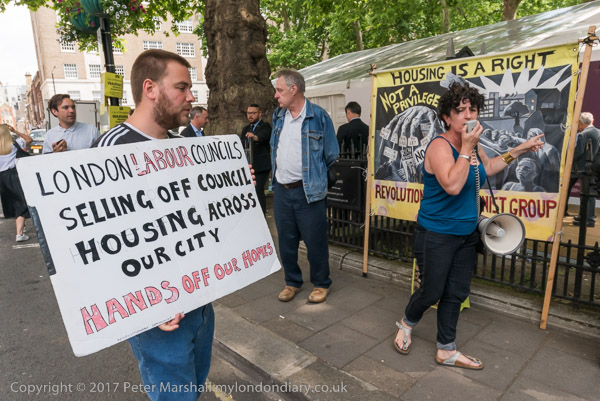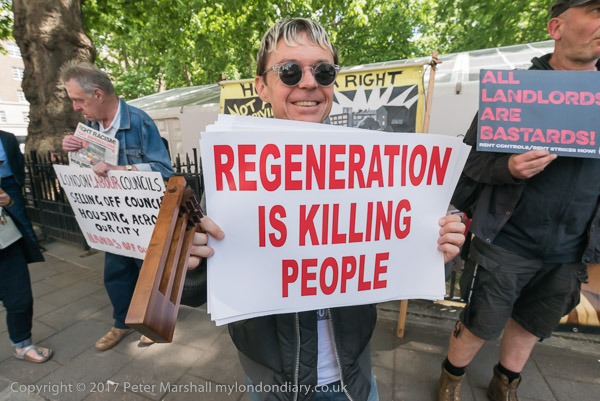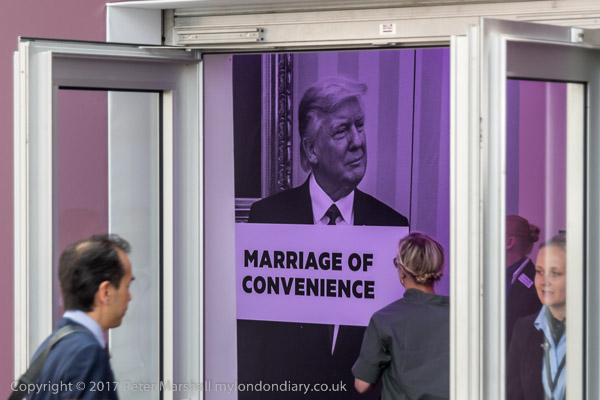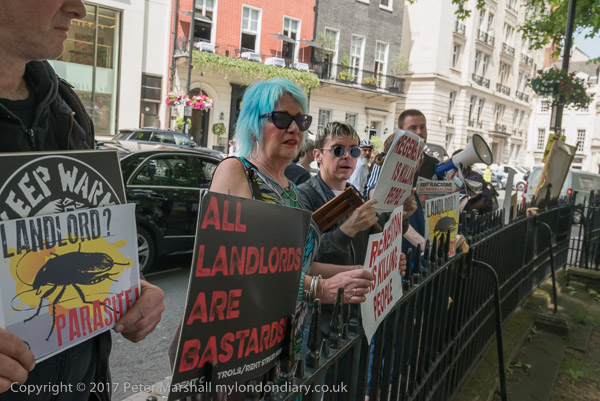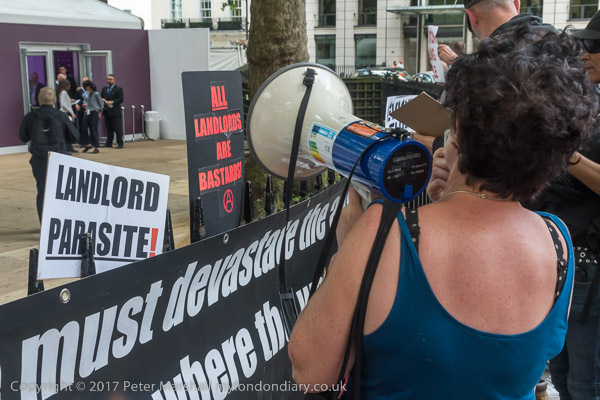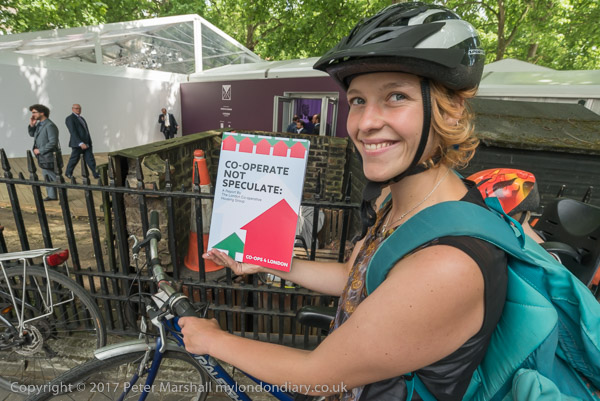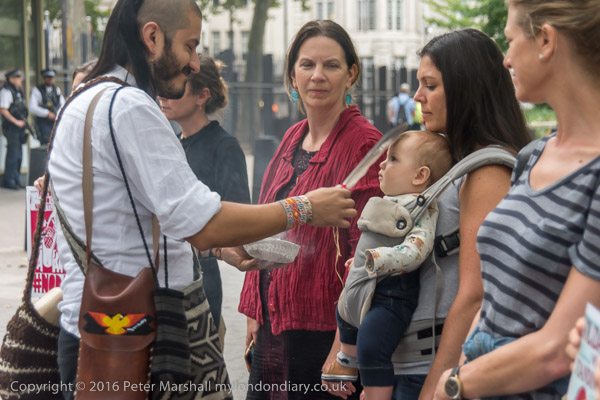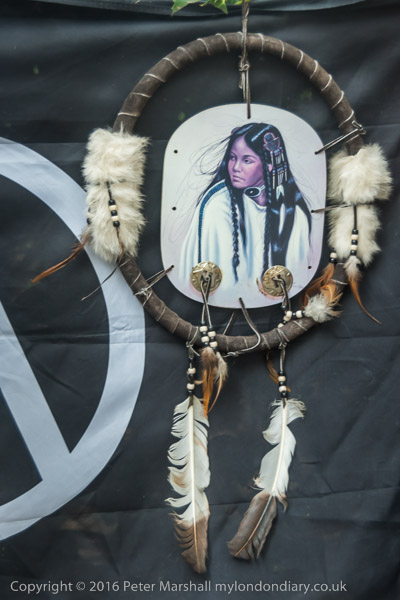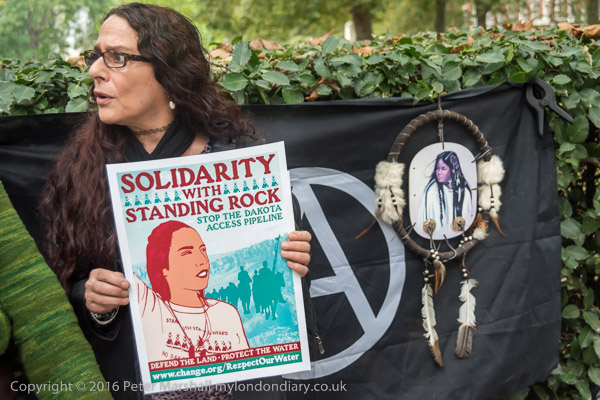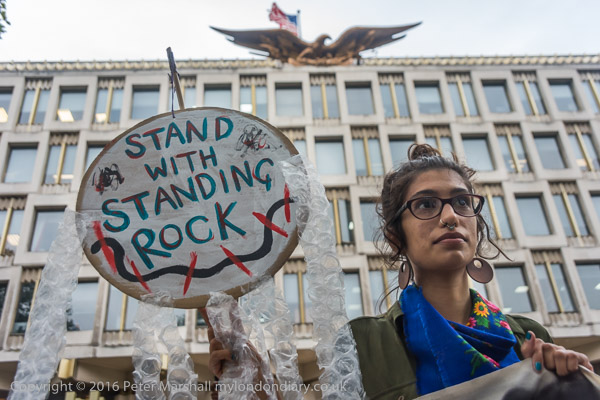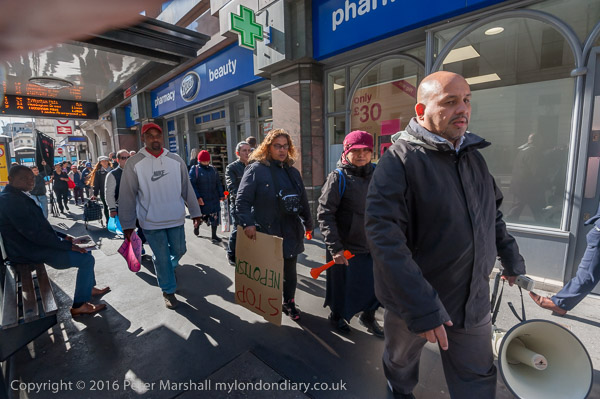
There are always a number of things on my mind as I photograph protests by low-paid workers such as the cleaners protesting at a workplace. Obviously there are the reasons for the protest – and if I didn’t feel they were justified I wouldn’t be there. Often, as on this occasion the workers have a number of greivances. They say the employer, Dall Cleaning Services had promised to pay them the London Living Wage, and then had sacked two cleaners and increased everyone else’s workload to keep their costs down, and that these sackings had been without notice or proper procedures.
While these sackings could be taken to a tribunal, where in all probabilty the workers would win their case, going to tribunal takes a long time and has now been made an expensive process, with costs calculated by the Tory government to be high enough to make it virtually impossible for the ordinary worker. One of the advantages of belonging to a trade union is that they can usually afford to take cases like this to tribunals and also supply trained legal support. But the changes in the law have made it much cheaper and faster to try to settle such matters by protests and strike.
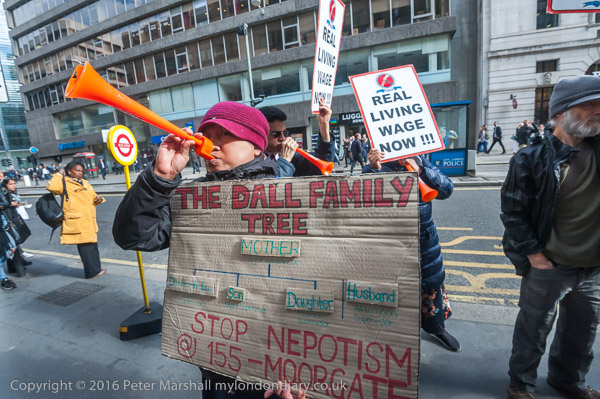
Here the workers were also complaining about the Dall’s management, in the workplace , dominated by members of one family, whose members working there were treated better than the other workers. They want an end to nepotism in the workplace. It’s something that should be policed by Dall’s higher management but the cleaners say their complaints are simply ignored.
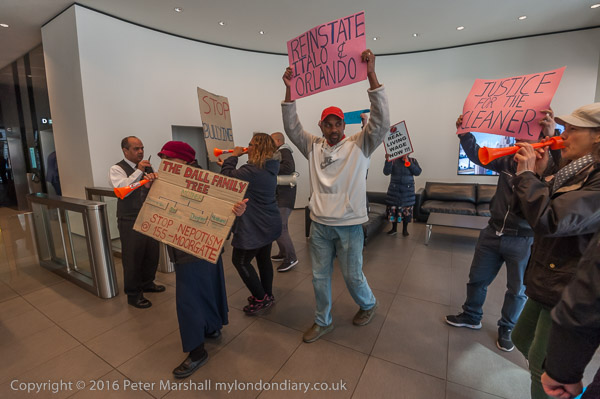
But I’m also thinking about my legal rights. On the street there are few if any restrictions on photography and on publishing as news coverage. But it seemed likely that the IWGB would manage to enter the foyer of the Mace offices. The position on private property is less clear, but certainly, unless I was specifically asked to stop taking pictures by a person I was convinced represented the owners of the building I intended to photograph the event.
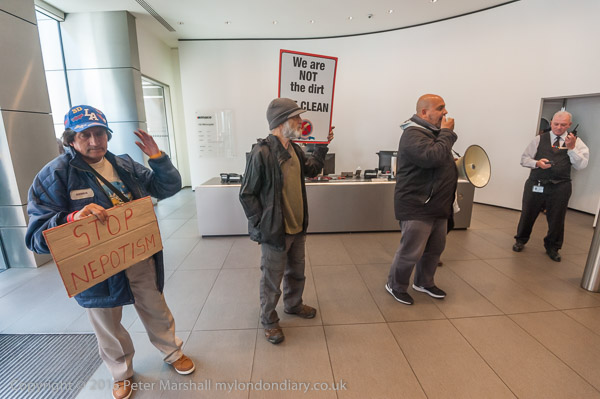
I hang back slightly as the cleaners rush in, but after the first two or three have gone past any security at the entrance, follow in with the others. It certainly is no part of my job to actually force an entrance in any way, but if there is an open door from the street I’ll happily walk through it.
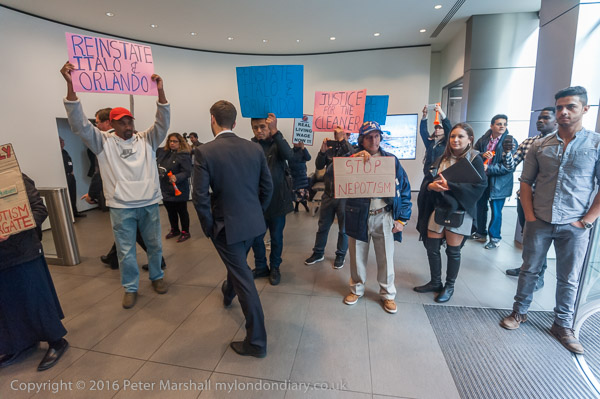
Fortunately no one asked me to stop taking pictures, and knowing that it was likely they would be going inside the building I’d remembered as we went towards it to increase the ISO setting on both my cameras. Because there would be less light and there was a possibility of some action taking place I’d set both cameras at ISO2000 or ISO2500.
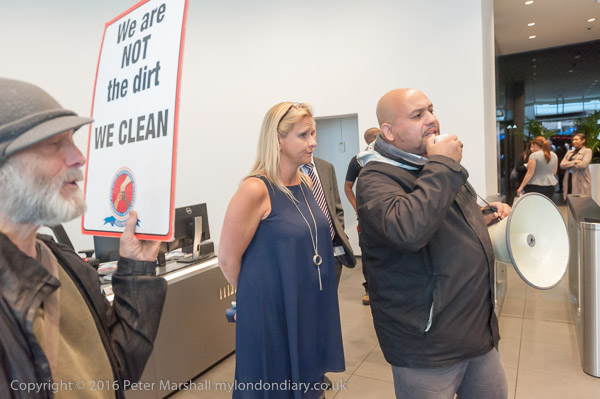
It’s an important advantage of the D810 that it has an ISO button on the dial at the top right of the body, and pressing it displays the ISO in the top panel, where its a simple matter of turning the command dial to alter it, and the same is true of the D700 with which I took all of the pictures I’ve actually used in this post.
With the D750 I now use you need to go into the menu, though I make things easier by putting the ISO on the user menu, along with other items I’m likely to want while working, and making sure to enter the User Menu before starting taking pictures.
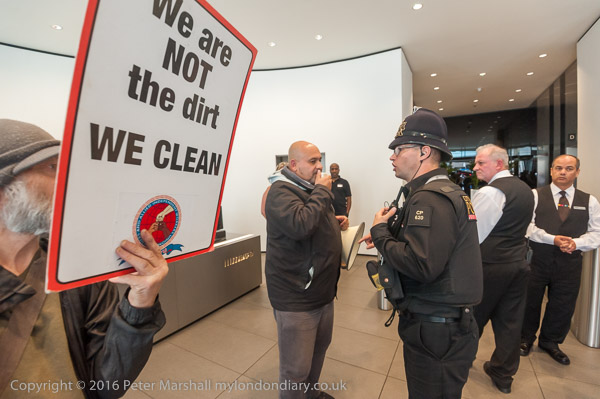
I could rely on auto-ISO, which I actually usually have turned on, but for this to be really effective you have to select a fairly high shutter speed as the minimum speed at which the ISO increases. With a lens like the 28-200 zoom there is really no sensible choice. I’d be quite happy with 1/30th at the wide end, but at the long end I’d want 1/250th or faster. It would be nice if Nikon would allow the camera to apply the 1/focal length rule – and better still if it allowed you to choose from various fractions or multiples of this. All of the pictures in this post were made with the 16-35mm f4, though I was also using the 28-200mm.
Inside occupations such as this it is difficult to work sensibly, in part because you never know how long you are likely to get to take pictures. I try not to simply dash off pictures but to get images that have something to say about the particular protest, looking for elements that identify the company concerned or make clear why the workers are protesting. I also make a conscious effort to vary my viewpoint and angle of view to provide a variety of images.
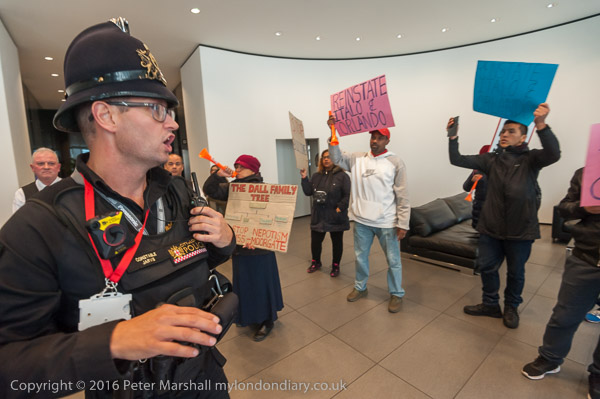
An element of farce was introduced when the police finally arrived, a single officer who clearly didn’t really know what to do. After failing to get a great deal of attention from Alberto Durango who was leading the protest, he stepped aside and called for help.
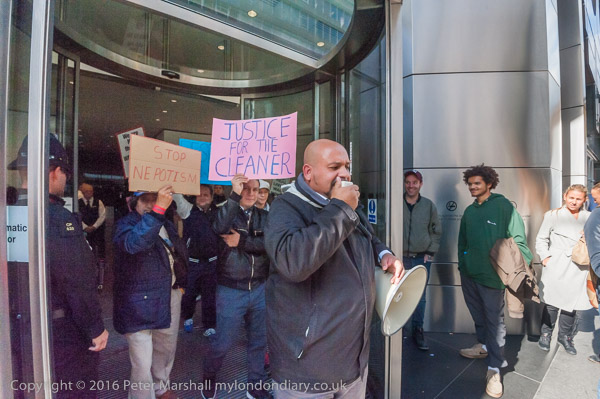
As usual the protesters left in an orderly fashion when they felt they had made their point – and that the police might start to arrest them for aggravated trespass should they remain, and the protest then continued on the pavement.
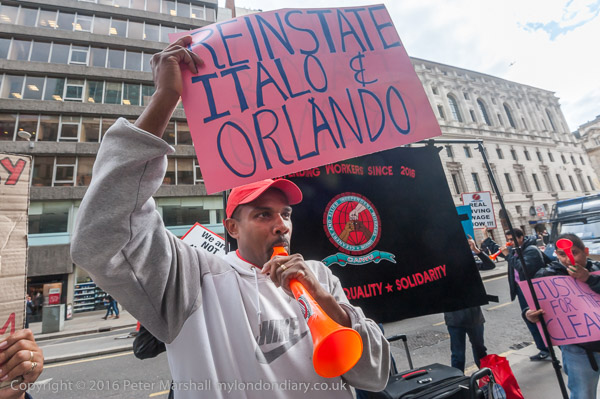
Protests like this, that make clear how badly the cleaners who clean the Mace offices are treated and embarrass them as they would any respectable company, and usually lead to pressure being put onto cleaning contractors, all of whom seem out to give their staff little or nothing more than the bare legal minimum conditions and to employ management who just aren’t up to the job.
In this case I don’t recall the details, but it wasn’t long before a further protest was called off as a satisfactory settlement had been reached.
You can see more of the pictures I took at this protest by the IWGB (Indpendent Workers of Great Britain) on My London Diary at Cleaners demand ‘End Nepotism’.
